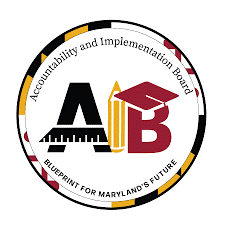Proposed education bill would reduce testing, lower graduation requirements – By Christian Casale, Florida Phoenix
A trio of education bills passed by the Senate K-12 education committee, all priorities for Senate President Kathleen Passidomo, could ease the burden standardized tests place on students. However, critics say they don’t go far enough to address the state’s educational needs.
One of the bills would allow parents more power to determine whether their third-graders should move to the next grade.
Florida law mandates that third-graders who do not score a Level 2 or above on the Florida Standards Assessment English Language Arts assessment, graded on a scale of 1 to 5, cannot be promoted to the fourth grade. However, a student can achieve certain “good cause exemptions” to move up — for example, if they do well on an alternative standardized test, earn grades that show their proficiency, or have a disability.
A Senate analysis of the bill says it will “expand parental rights” in line with the 2021 Parental Bill of Rights, legislation championed by Gov. Ron DeSantis that states, “It is a fundamental right of parents to direct the upbringing, education, and care of their minor children.”
If a parent wants their student to move up, they would be able to work with the school to create an intervention plan in lieu of a passing English assessment score. Aspects of the plan could include read-at-home sessions, participation in a school district’s summer reading camp, or 90-minute daily reading instruction sessions.

$19 million awarded to prepare students for in-demand careers – By Darren Svan, Idaho Ed News
Idaho’s $45 million push to expand workforce-ready education programs into rural parts of the state is moving rapidly — about three-fourths of the grant money has been awarded to 35 programs.
Applications for the Idaho Career Ready Students (ICRS) grant program opened four months ago and state leaders have awarded a total of approximately $35 million. The grant money targets new or expanding career technical programs focused on in-demand careers.
On Monday, the ICRS council announced its newest round of recipients: 22 plans and programs were awarded $19 million. In total, 108 applications were received in the past four months, with requests surpassing availability by $66 million.
“When we see $111 million in requests from our districts and charters, it definitely underscores the demand for CTE and the difference that this program can make for communities across Idaho. As these programs grow and mature, they will support students’ career prospects while also addressing the state’s workforce needs,” said Superintendent Debbie Critchfield.

Maryland Department of Education, Blueprint board aim to boost literacy achievement in elementary schools – By William J. Ford. Maryland Matters
To help boost literacy achievement in Maryland’s elementary schools, the Blueprint Accountability and Implementation Board approved a proposal Thursday that will send literacy experts to schools in each of Maryland’s counties and the city of Baltimore by the end of this school year.
Before these teams arrive at the schools, Rachel Hise, executive director of the Blueprint board, said school leaders must complete a draft literacy plan for elementary students by Jan. 15.
The goal for the initiative, which the state Board of Education also unanimously approved last week, is to ensure students in third grade are reading at a proficient level.
Maryland’s latest standardized test scores showed improvements with 48% of third-grade students proficient in English language arts, an increase from 41% in 2019 and 46% last year.
However, some schools with students in that grade had fewer than 7% at a proficient level.

South Dakota needs more teachers. Here's why it's not as easy as just hiring more – By Morgan Matzen, Sioux Falls Argus Leader
There’s a teacher shortage in Sioux Falls, in South Dakota and across the nation.
But, none of this is “new news,” Becky Dorman, the human resources director for the Sioux Falls School District, said at a September Downtown Sioux Falls Rotary meeting. The shortage was exacerbated by the pandemic, by politics and by workforce trends of fewer people going into the service industry, Dorman said.
Peak teacher job openings have increased by 200 over the last five years. Compared with the rest of the nation, South Dakota falls in the middle of states experiencing teacher shortages, according to a USA TODAY data analysis of teacher-student ratios to identify potential shortages.
The pandemic, for example, gave people an opportunity to reexamine what they were interested in doing, she said.
“I do think we are seeing educators looking at other opportunities, because right now, there are just so many opportunities for employment, even here in Sioux Falls,” Dorman told the Argus Leader on Sept. 26. “Who wouldn’t want to hire a teacher? They’re intelligent, organized and well-spoken.”











